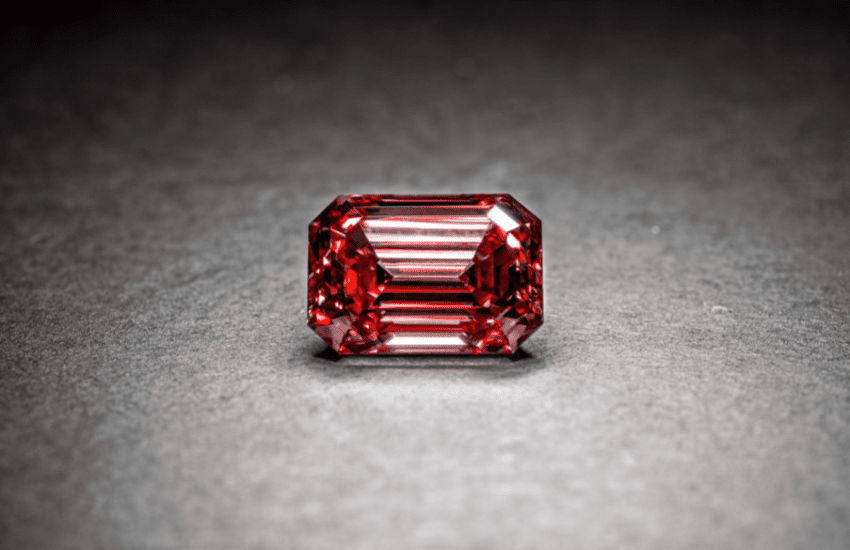
Table of Contents
The rarest of the rare, only a handful of true red diamonds are known to exist in the world. These are among the most coveted types of colored diamonds, and are extremely valuable and expensive. In this guide, we’ll take a look at how to evaluate red diamonds, how synthetic red diamonds make for an excellent alternative, and
What is Red Diamond?
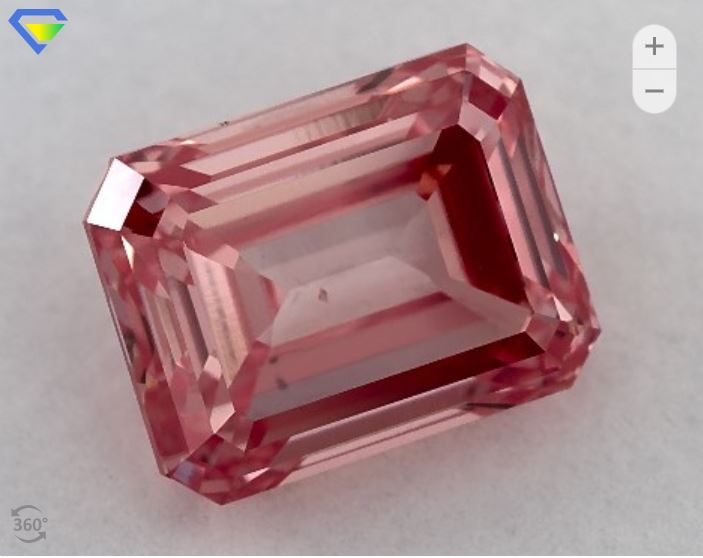
Originating in mines in Africa, Australia, and Brazil, the red diamond is known for its extreme rarity. It is the least common of all the fancy-colored diamonds and the priciest.
It is hard to come by a pure red diamond, devoid of secondary colors. According to the lab reports of GIA not a single lab report was issued for a diamond with ‘red’ as its color over the last 30-year period.
The unbelievable rarity of a natural red diamond controls its exorbitant prices, making almost impossible to find one, regardless of how much money you may have.
How is a Fancy Colored Diamond Formed?
Diamonds are made from highly organized carbon. When these atoms combine flawlessly without imperfections or alterations, a pure, colorless and perfectly transparent diamond is formed.
If there are glitches during the chemical bonding, the result is a colored diamond. For instance, yellow diamonds (the most common of fancy diamonds) are formed due to nitrogen present during its formation while blue diamonds are created due to the presence of boron.
What Causes the Red Color in Red Diamonds?
Red diamonds, on the other hand, are not formed from the presence of a foreign element. Just like colorless diamonds, red diamonds too are made purely of carbon.
What causes the color is a slight deformity in the crystal lattice of the carbon atoms. When light passes and bends through it, a ruby-like color is reflected.
How are Red Diamonds Graded?
Another quality that separates these precious red diamonds from other colored diamonds is how they are classified and graded when it comes to color.
Red diamonds come at the end of the pink diamond spectrum. To be considered red, they have to be highly saturated.
Generally, colored diamonds are further graded into their levels of intensity, with modifiers such as Fancy, Faint, and Vivid used to describe the intensity of the color. However, red diamonds aren’t graded on that scale – they come in only one grading Fancy Red, along with modifiers of any secondary hues.
Just like other colored diamonds, red diamonds can contain secondary colors. The most common are:
- Fancy Red
- Fancy Brownish Red
- Fancy Purplish Red
- Fancy Orangey Red
Of these, Fancy Red is the most valuable but the hardest to find, as pure red diamonds are almost non-existent. Purplish Red is the most common and the most beautiful variety. Red diamonds with orange or brown overtones aren’t as valuable as the other types.
The stronger the red color, the higher the price of the diamond.
Are there Lab-Grown (Man-Made) Red Diamonds?
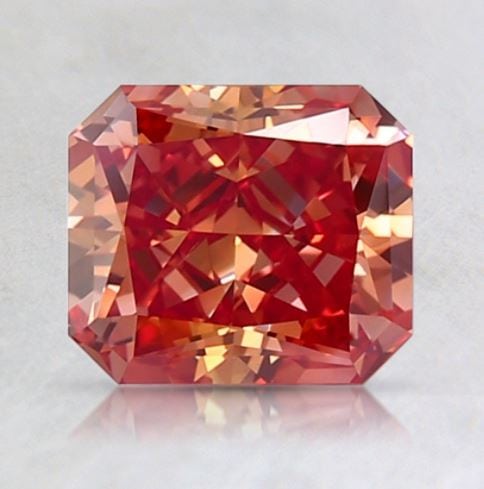
Yes, synthetic or lab-grown red diamonds are available, but they are also limited in number and are still relatively expensive. However, this is the best way to own a red diamond at a reasonable price.
Lab-grown or synthetic diamonds are cheaper, environment-friendly, and conflict-free. Without destroying the ecosystem by extracting naturally grown diamonds, synthetic diamonds are produced in controlled laboratory conditions that simulate the processes and properties of a natural diamond.
What Are Enhanced Red Diamonds?
Enhanced red diamonds are created through the process of irradiation, a post-growth treatment, to change a diamond’s color and/or its intensity.
Through irradiation, yellow, white, or blue lab-grown diamonds or natural white diamonds are bombarded with neutrons or electrons to change the structure of the crystal lattice, modifying the diamond’s color.
The stone is then heated to achieve the desired reddish hue. It can be difficult to achieve the desired hue when treating larger stones.
These stones are still pricey because they’re made by modifying an actual diamond. These red stones offer all the benefits of a diamond, such as its supreme durability and brilliance, at a more reasonable price point.
How Do You Evaluate Synthetic/Enhanced Red Diamonds?
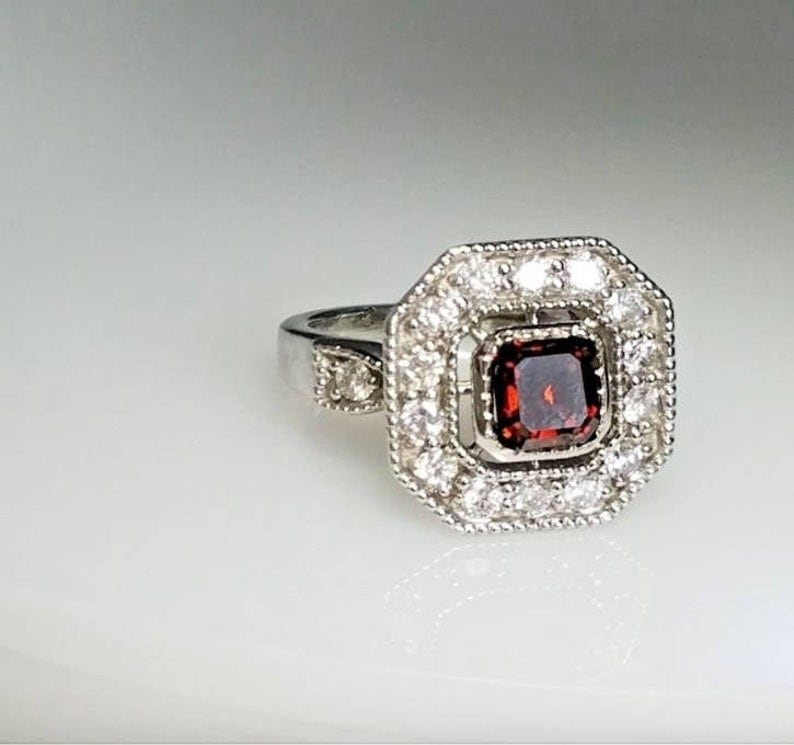
The greatest advantage of buying synthetic or enhanced diamonds is that you have more options with regards to weight (carat), color, clarity and cut of the diamond. Below is a brief list of the considerations when buying synthetic or enhanced diamonds:
1- Carat
Generally, the higher the carat (weight), the more valuable the diamond is. Red diamonds rarely come in great sizes. So, it’s safe to say that red diamonds are an exception to this rule.
In fact, the largest known red diamond – the Moussaieff Red – is only 5.11 carats. All other true red diamonds are less than a carat in size.
However, synthetic red diamonds provide more options, and you may be able to find a slightly larger stone.
2- Color and Clarity
Clarity is not a significant factor when it comes to colored diamonds, as color is the most important aspect.
You may want to pay attention to how red diamonds look in different lighting conditions when purchasing.
For example, they look best in daylight and worst in fluorescent light. While pure red diamonds are the most valuable, if you’re going for a natural stone, your options will be limited.
3- Cut
A diamond’s cut can significantly affect how brightly it sparkles. The rule of thumb is to choose a cut that would maximize the light that passes through the diamond to better reflect its color.
In the case of red diamonds, they come best in asscher, emerald, radiant and oval cuts that emphasize the red color. The round brilliant cut, which is the most popular for colorless diamonds, tends to lower the saturation in red diamonds.
How Important is the Lab Report?
Whether you buy a synthetic, enhanced or natural red diamond, it is crucial to have a reputed gemological lab to evaluate the stone. The report will tell you the origin, grade, clarity, color and other critical information.
Also, make sure that your lab of choice conducts its process using modern, state-of-the-art equipment for grading and treatment.
GIA is the most popular certifying lab, known for their stringent standards.
What Are the Most Famous Red Diamonds?
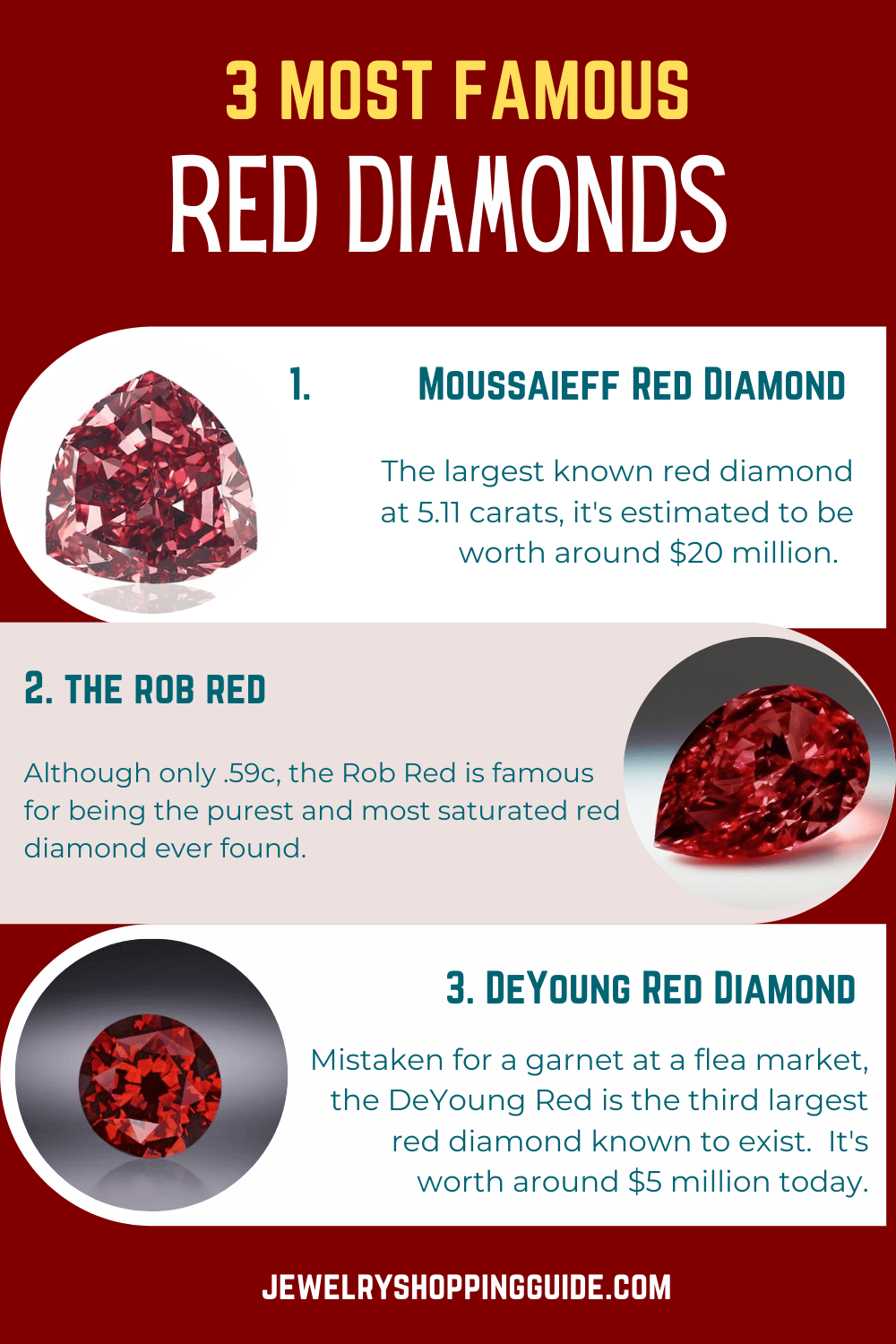
1. Moussaieff Red Diamond
The largest known red diamond is the Moussaieff Red Diamond at 5.11 carats. It is a flawless, fancy red, trilliant cut stone that is breathtaking in its beauty.
The stone was acquired by the Moussaieff jewelry firm for $8 million. Today, it’s estimated to be worth around $20 million.
2. The Rob Red
The Rob Red, named after its owner Robert Bogel, is a small stone at .59 carats, featuring a pear shape. What makes this stone so special is that it’s the only graded red diamond in the world with the most saturation and purest red hue.
3. The DeYoung Red Diamond
The third largest red diamond discovered in the world, the DeYoung Red was found by Sydney DeYoung, who bought it at a flea market thinking it was a garnet. After his death, the diamond was donated to the Smithsonian Institution. It’s estimated to be worth around $5 million.
4. Hancock Red Diamond
Named after the collector Warren Hancock, this brilliant cut red diamond weighs .95ct.
Hancock reportedly bought the diamond in the 1950s for around $13,000. The diamond was auctioned in 1987 for $880,000, which was a record-breaking price at the time and eight times its pre-sale estimate.
The Hancock Red isn’t known for its size, but for its beautiful purplish red color.
Wrapping Up
Red diamonds are exceedingly rare, and natural stones are typically a collector’s item. However, thanks to the advancement of science and technology, lab created and enhanced red diamonds have made these stones more accessible.









